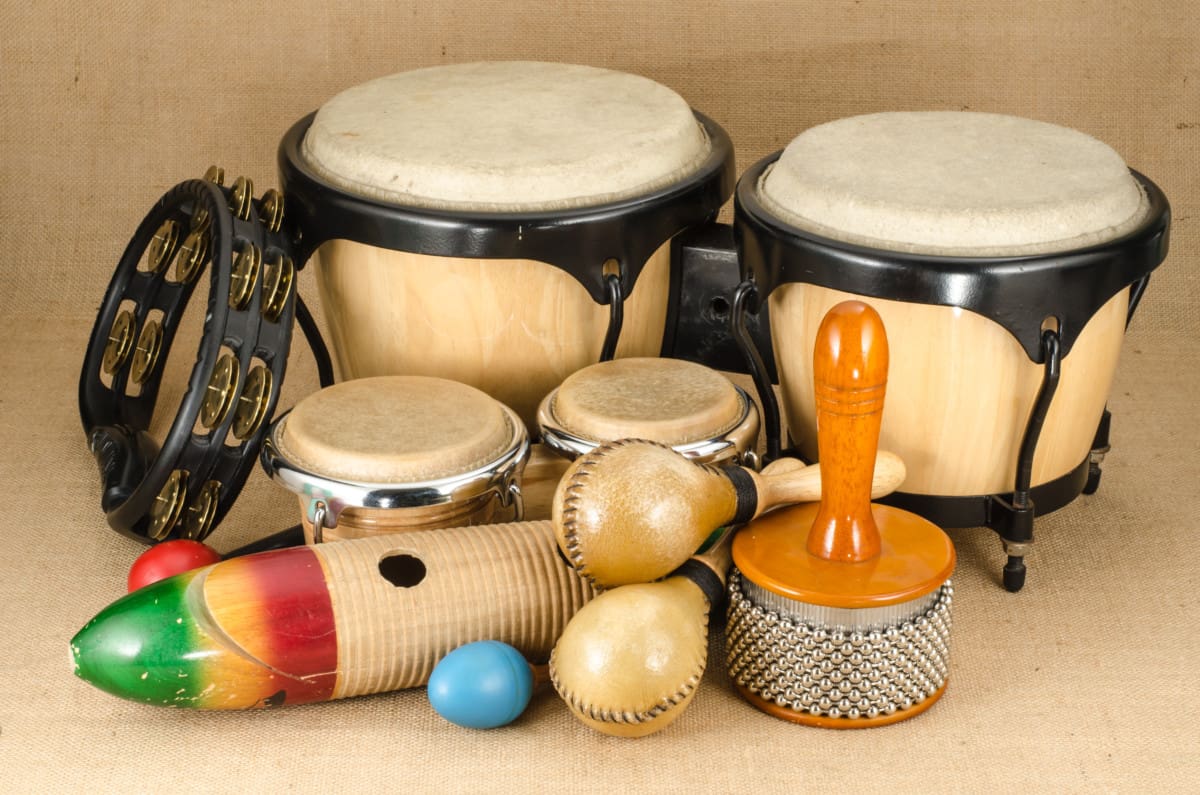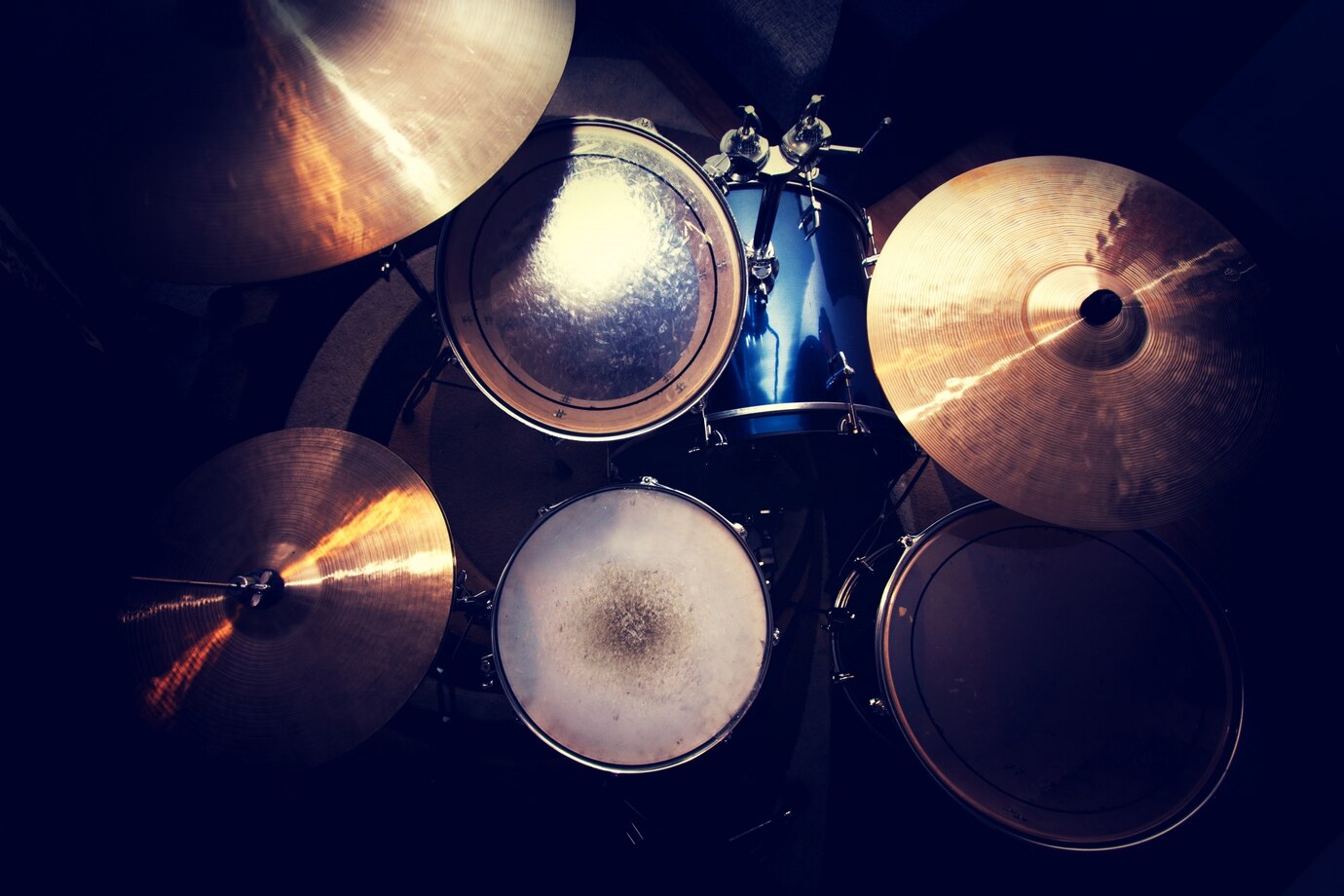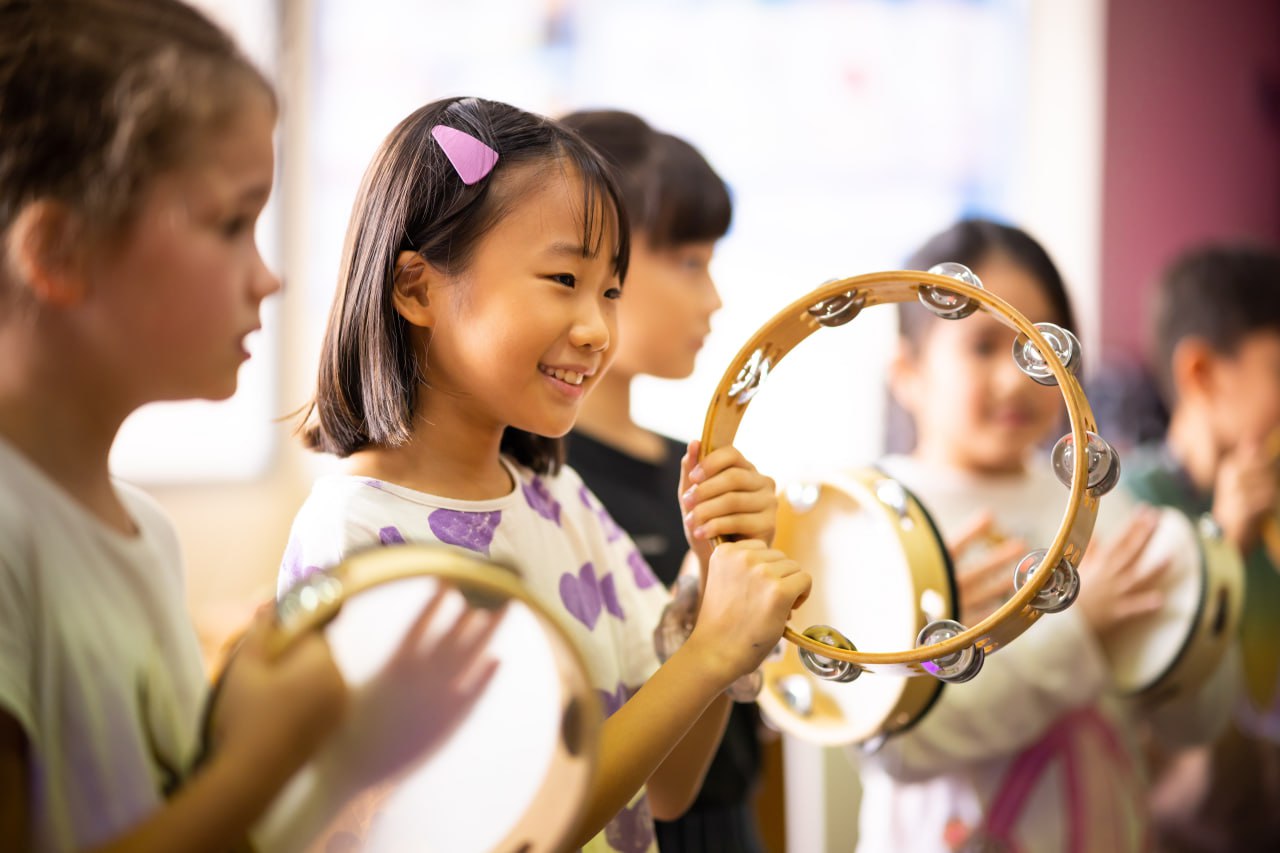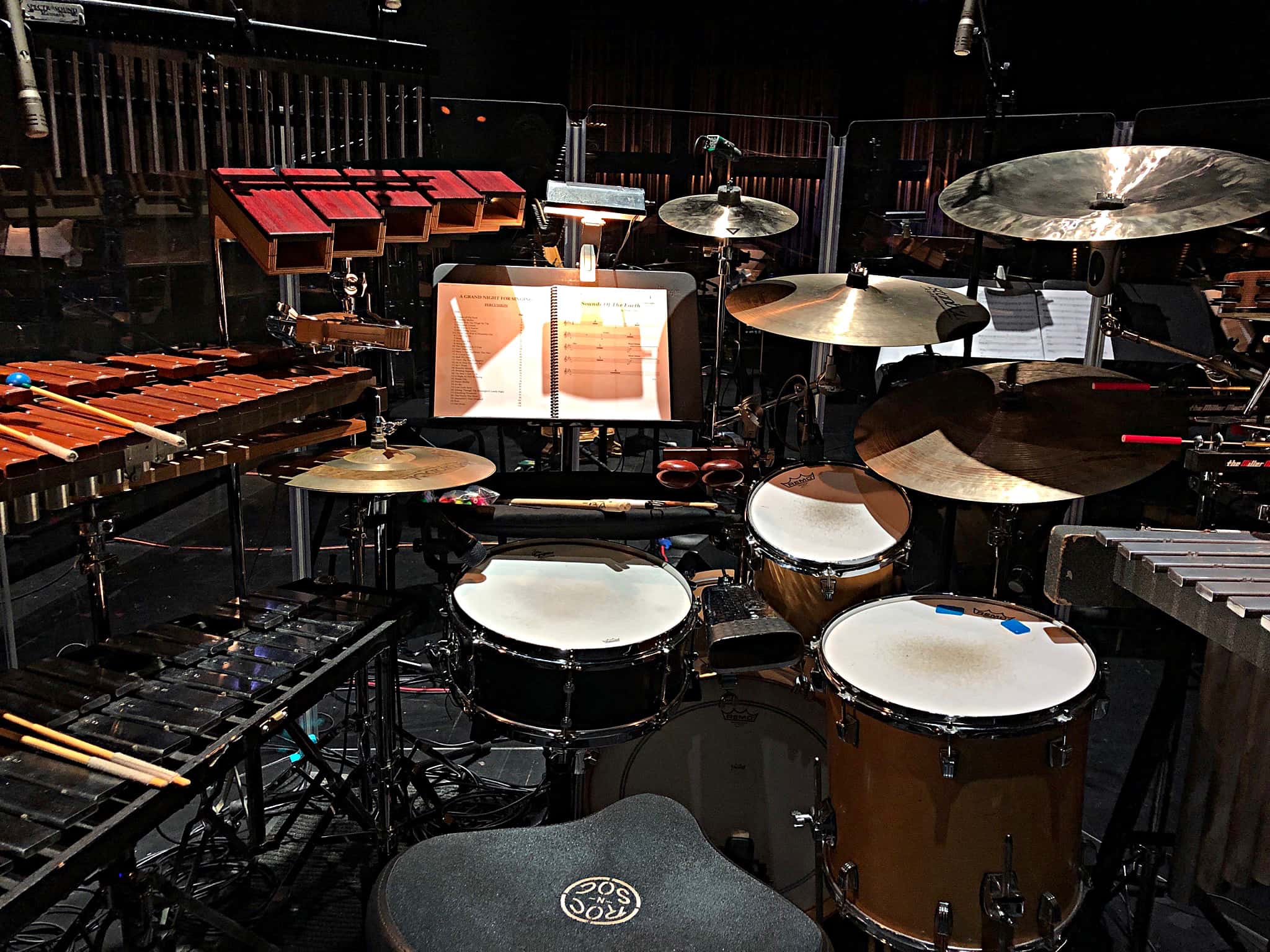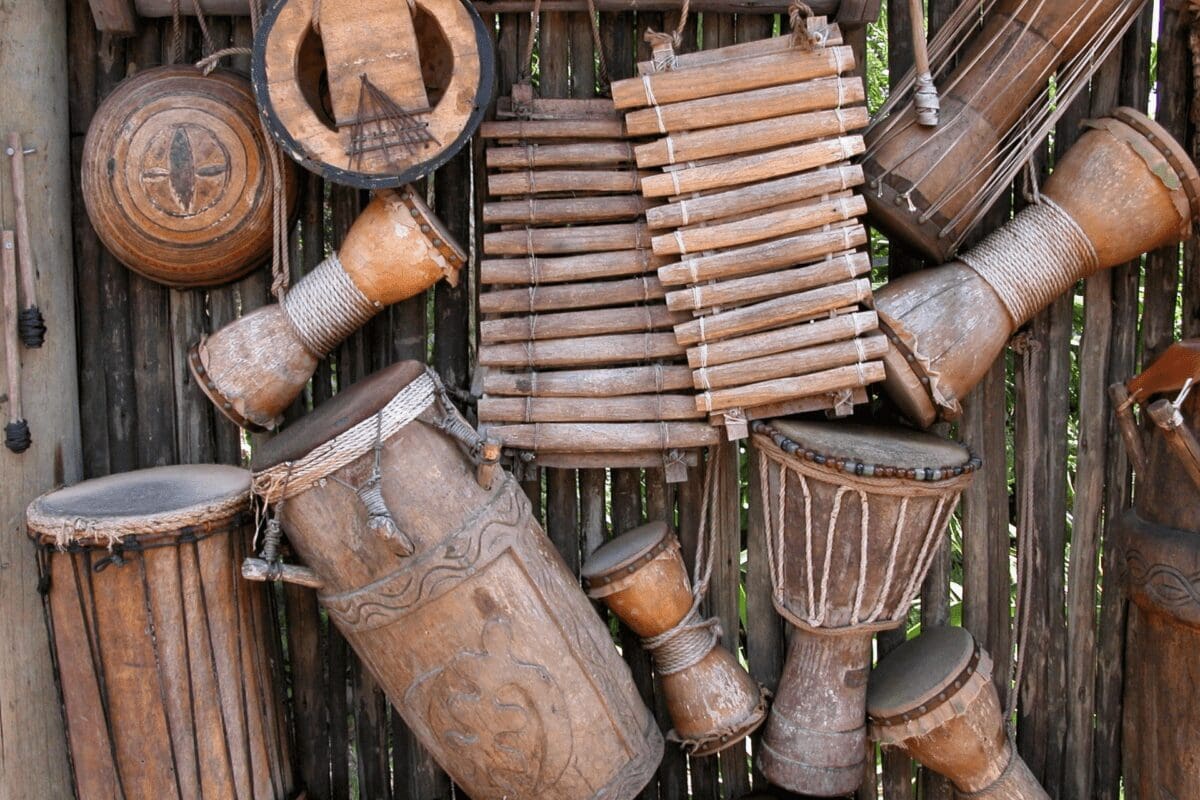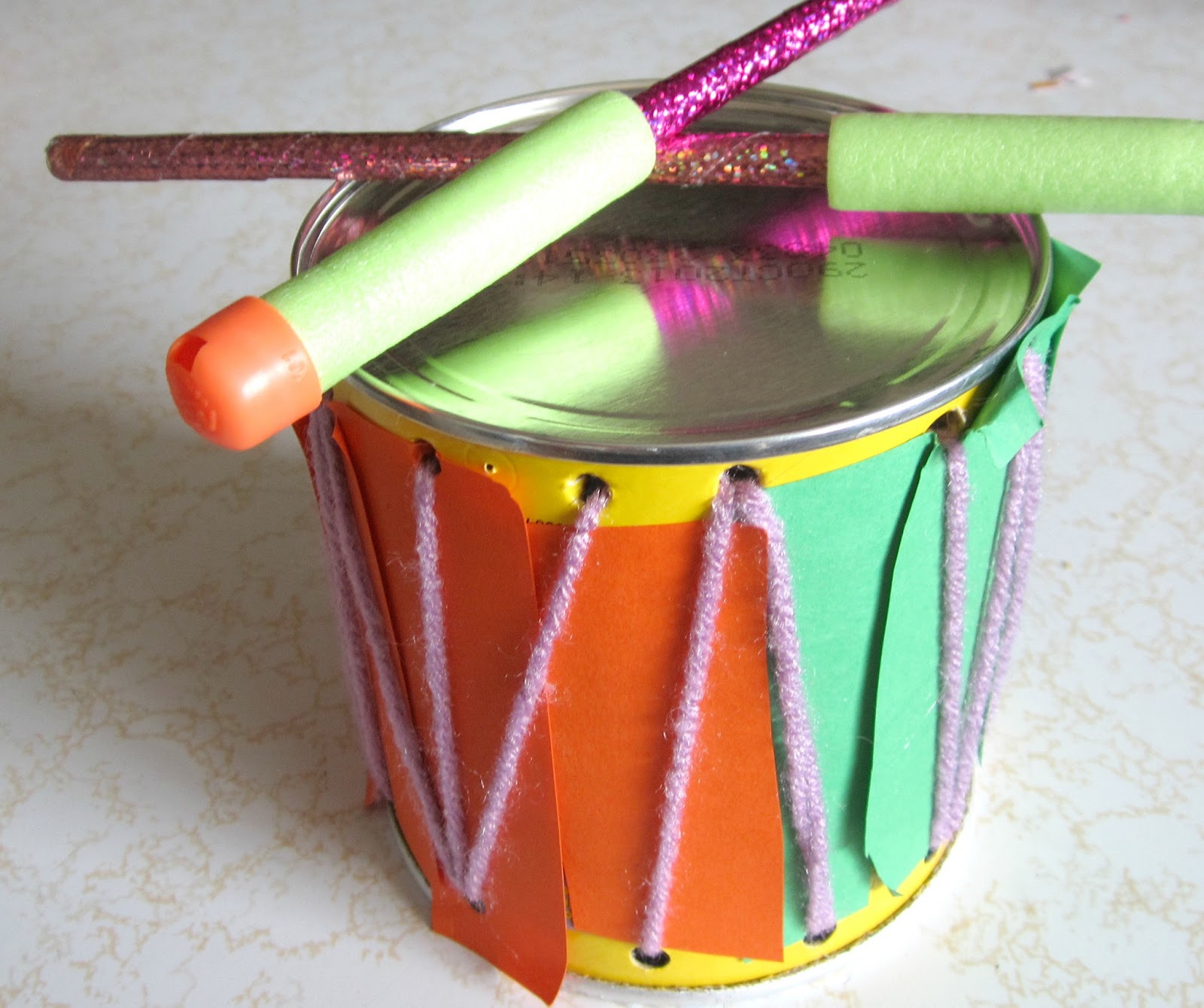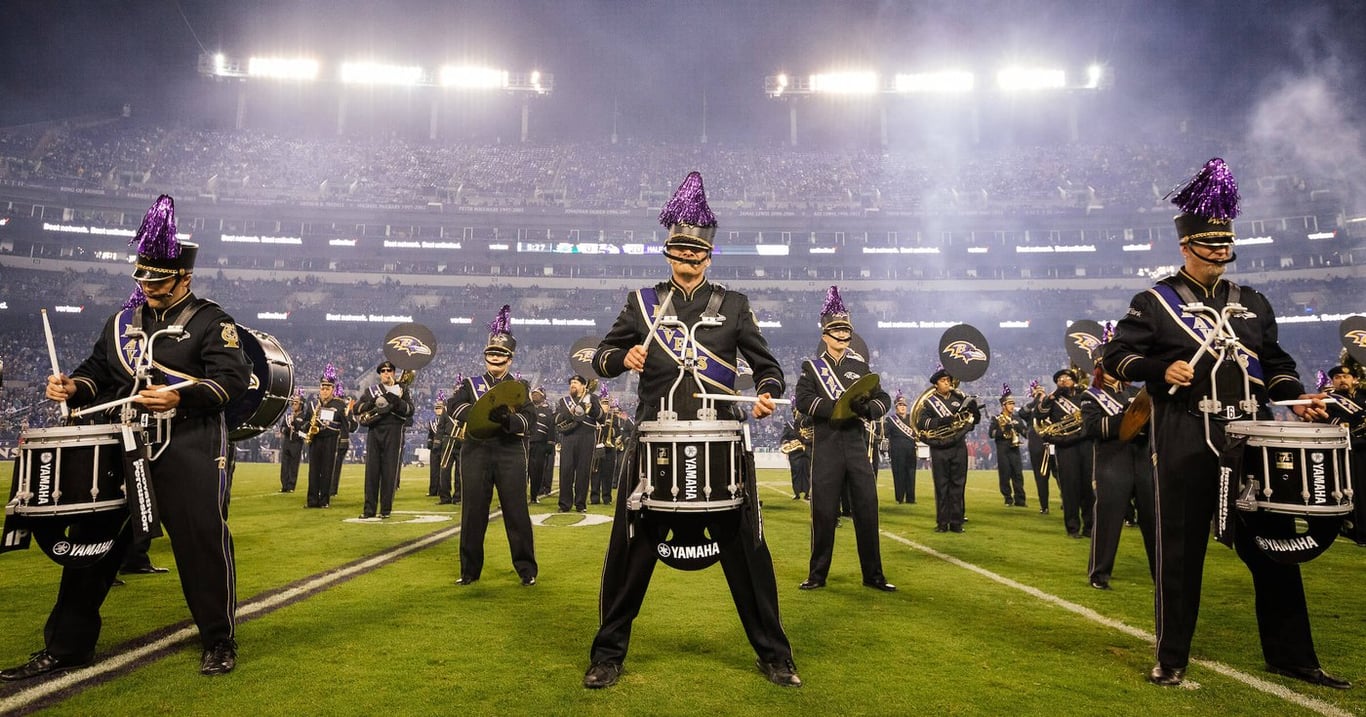Home>Instruments>Percussion Instruments>How Are Percussion Instruments Used In West African Music


Percussion Instruments
How Are Percussion Instruments Used In West African Music
Published: January 16, 2024
Discover the role of percussion instruments in West African music and their significance in creating rhythmic patterns and adding depth to traditional melodies.
(Many of the links in this article redirect to a specific reviewed product. Your purchase of these products through affiliate links helps to generate commission for AudioLover.com, at no extra cost. Learn more)
Table of Contents
- Introduction
- Background of West African Music
- Overview of Percussion Instruments
- Traditional Roles of Percussion Instruments in West African Music
- Drumming and Rhythmic Patterns
- Communication and Cultural Significance of Percussion Instruments
- Contemporary Use of Percussion Instruments in West African Music
- Fusion with Other Musical Genres
- Conclusion
Introduction
Welcome to the world of West African music, a rich and vibrant cultural tapestry filled with infectious rhythms, soul-stirring melodies, and a deep-rooted connection to tradition. At the heart of West African music lies the captivating sound of percussion instruments, which play a crucial role in creating the energetic and pulsating beats that define this genre.
From the bustling streets of Lagos to the remote villages of Mali, percussion instruments have been an integral part of West African music for centuries. The rhythmic patterns produced by these instruments provide the foundation for dance, storytelling, and community celebrations.
In this article, we will delve into the fascinating world of percussion instruments in West African music. We will explore their traditional roles, cultural significance, and the ways in which they have evolved and continue to be embraced in contemporary music.
So, grab your djembe, strap on your shekere, and let’s embark on a rhythmic journey through the enchanting realm of West African percussion instruments!
Background of West African Music
To truly understand the importance of percussion instruments in West African music, it is crucial to explore the rich historical and cultural context in which this music originated.
West African music is deeply rooted in the cultural traditions of various ethnic groups spread across countries such as Nigeria, Ghana, Senegal, Mali, and Guinea, to name a few. This music serves as a means of communication, storytelling, and expression of identity within these communities.
The rhythms and melodies found in West African music are often influenced by the natural sounds of the environment. The beating of drums mimics the sound of thunder, the rustling of leaves, or the rhythmic footsteps of dancers.
One element that sets West African music apart is its strong oral tradition. Songs and rhythms are passed down from generation to generation through oral transmission, preserving the integrity and authenticity of the music.
Another characteristic of West African music is its communal nature. Music is not limited to a stage or a formal setting—it is woven into the fabric of everyday life. From village gatherings to religious ceremonies, music forms an integral part of social and cultural interactions.
This communal spirit is reflected in the use of percussion instruments, which provide a rhythmic foundation that brings people together in harmony and unity.
While the exact origins of West African music remain shrouded in history, its influence has spread far and wide. The rhythms and grooves have made their way into various music genres, including jazz, blues, reggae, and Afrobeat, impacting global music scenes and inspiring countless artists.
In the next sections, we will explore the percussion instruments that have played a central role in shaping the unique soundscape of West African music.
Overview of Percussion Instruments
Percussion instruments are the heartbeat of West African music, providing the driving force behind the energetic and infectious rhythms that define this genre. These instruments come in a variety of shapes, sizes, and materials, each with its own unique sound and character.
One of the most iconic percussion instruments found in West African music is the djembe. Originating from Mali, the djembe is a goblet-shaped drum carved from a single piece of wood and covered with goat skin. Its deep bass tones, snappy slaps, and ringing tones make it a versatile instrument that can produce a wide range of sounds.
Alongside the djembe, the dunun drums play a pivotal role in West African music. Consisting of a set of three different-sized cylindrical drums, the dunun provide a deep, resonant foundation to the rhythms. Each dunun contributes a distinct pitch, creating a layered and intricate rhythmic tapestry.
Other prominent percussion instruments in West African music include the shekere, balafon, and talking drum. The shekere is a gourd covered with a net of beads or shells, which creates a shaker-like sound when shaken or struck. The balafon is a wooden xylophone-like instrument that produces melodic tones, while the talking drum is a tension drum with adjustable strings that can mimic the tonal inflections of human speech.
These are just a few examples of the vast array of percussion instruments found in West African music. Each instrument has its own distinct role in the ensemble, contributing to the complex layers of rhythm and melody.
As West African music has evolved and blended with other musical traditions, new instruments have been introduced. For example, the conga and bongo drums from Latin America have found their place in Afro-Cuban and Afrobeat music, adding a cross-cultural dimension to the percussion section.
Whether carved from wood, made from animal hides, or constructed using modern materials, percussion instruments in West African music are not merely tools for creating rhythm—they are extensions of cultural heritage, vehicles for storytelling, and catalysts for community spirit.
Now that we have explored the various percussion instruments, let’s dive deeper into their traditional roles in West African music.
Traditional Roles of Percussion Instruments in West African Music
In West African music, percussion instruments have played a vital role for centuries, serving as more than just instruments to create rhythm. They have been deeply woven into the fabric of traditional music, fulfilling a range of roles that go beyond mere entertainment.
One of the primary functions of percussion instruments in West African music is to provide a rhythmic foundation. The steady beats produced by drums such as the djembe and dunun establish the pulse and groove of a piece. These rhythms serve as a guide for dancers, allowing them to synchronize their movements with the music.
Percussion instruments also carry cultural and communicative significance. For example, the talking drum, also known as the “dùndún,” is often used to convey messages through its tonal variations. Skilled drummers manipulate the drum’s tension and strike the surface with a curved stick, creating different pitches and imitating the patterns of tonal speech. The talking drum has been historically used as a form of long-distance communication, carrying messages across villages and even empires.
In addition to their rhythmic and communicative roles, percussion instruments in West African music serve as cultural markers, representing the traditions and heritage of specific ethnic groups. Different regions and communities have their own distinct drumming styles and patterns, reflecting their unique cultural identities.
For example, the rhythms of the Ewe people in Ghana and Togo are characterized by intricate polyrhythms, with different drums and percussion instruments interlocking to create complex patterns. In contrast, the rhythms of the Malinke people in Guinea and Mali are characterized by a strong emphasis on the dunun drums, which play repetitive and hypnotic patterns.
Percussion instruments are also integral to ceremonial and ritualistic practices in West African music. They accompany various rites of passage, such as weddings, funerals, and initiations, providing a sonic backdrop that enhances the spiritual and emotional elements of these events.
Furthermore, percussion instruments often play a role in storytelling and oral tradition. Griots, or traditional musicians and storytellers, utilize drums and other percussion instruments to accompany their narratives and bring them to life. The rhythms and beats add an element of drama and captivate listeners, enhancing the emotional impact of the stories being told.
Overall, percussion instruments in West African music hold multiple layers of significance. They provide rhythm, communicate messages, preserve cultural heritage, and contribute to the social fabric of communities. The traditional roles they play are a testament to the power and importance of these instruments in West African music.
Drumming and Rhythmic Patterns
Drumming lies at the core of West African music, with percussion instruments serving as the heartbeat that drives the music forward. The intricate rhythmic patterns created by these instruments add depth and complexity to the music, giving it its distinct West African flavor.
Traditional West African drumming is characterized by its polyrhythmic nature, with multiple rhythms interlocking and intertwining to create a dynamic and layered sound. Each drum in the ensemble has its own distinct part that contributes to the overall rhythmic tapestry.
A key concept in West African drumming is the concept of “call and response,” where one drum initiates a rhythm or phrase, and another drum or group of drums responds. This call and response pattern creates a lively and interactive dialogue between the different drums, resulting in an engaging and energetic rhythmic conversation.
Another important aspect of West African drumming is the use of improvisation. Skilled drummers have the ability to spontaneously create rhythmic variations and embellishments within the established rhythmic framework. This adds a sense of creativity and personal expression to the music, allowing each drummer to leave their unique imprint on the performance.
Rhythmic patterns in West African drumming are often influenced by the social and cultural context in which they are performed. For example, rhythms played during celebrations and festivities may be fast-paced and lively, evoking a sense of joy and excitement. On the other hand, rhythms played during spiritual ceremonies or rituals may be slower and more meditative, creating a trance-like atmosphere.
Drumming in West African music is not limited to isolated beats or individual performances. It is a communal activity that brings people together. Drum circles and ensemble playing are common, with each drummer contributing their part to create a cohesive and unified rhythm. This collaborative aspect of drumming fosters a sense of community, promoting a spirit of cooperation and connection among musicians and listeners alike.
As the rhythms of West African drumming have captured the attention of musicians around the world, they have also influenced various genres of music. The syncopated rhythms and infectious grooves of West African drumming can be heard in genres like jazz, funk, and world music, adding a unique flavor and rhythmic complexity to these styles.
Whether it is the syncopated beats of the djembe, the driving rhythms of the dunun drums, or the nuanced tones of the talking drum, West African drumming and its rhythmic patterns are a testament to the power and significance of percussion instruments in this vibrant musical tradition.
Communication and Cultural Significance of Percussion Instruments
Percussion instruments in West African music go beyond creating rhythm and melodies—they serve as powerful tools for communication and hold immense cultural significance. Through their distinct sounds and rhythmic patterns, these instruments convey messages, preserve oral traditions, and foster a deep sense of cultural identity.
One prime example of the communicative power of West African percussion instruments is the talking drum, known as the “dùndún” or “tama” in various regions. The talking drum is played by squeezing the strings and striking the drumhead with a curved stick, producing different pitches. Skilled drummers can manipulate the tension of the strings, allowing the drum to mimic the tonal inflections of human speech. This enables the talking drum to convey messages across vast distances, acting as a form of long-distance communication within communities and even between villages.
Percussion instruments in West African music also hold cultural significance. Different ethnic groups and regions have their own unique drumming styles and rhythms, which reflect their distinct cultural heritage. These rhythms not only serve as a means of musical expression but also represent the collective identity of the community. They are passed down from generation to generation, preserving cultural traditions and ensuring their continued relevance and significance.
Moreover, percussion instruments play a central role in communal and social gatherings. In West Africa, music is not just a performance meant for an audience—it is a participatory experience where everyone is encouraged to join in. The rhythmic beats of percussion instruments create a sense of unity and cohesion, bringing people together in celebration, storytelling, and various cultural events. Whether it’s a wedding, a religious ceremony, or a community festival, the presence of percussion instruments serves as a catalyst for communal bonding and a celebration of shared cultural heritage.
Beyond their communicative and cultural roles, percussion instruments in West African music also serve as vehicles for spiritual and emotional expression. They enhance ritualistic practices and rites of passage, accompanying ceremonies such as weddings, funerals, and initiations. The powerful rhythms and melodies produced by these instruments heighten the senses and evoke deep emotions, creating a sacred and transformative atmosphere.
As West African music has gained global recognition, percussion instruments have played a significant role in cross-cultural exchange and musical fusion. Musicians from around the world have embraced and incorporated the rhythms and sounds of West African percussion instruments into various genres, leading to the creation of vibrant musical fusions that bridge cultural boundaries and showcase the universal language of music.
Thus, percussion instruments in West African music serve as vehicles of communication, cultural preservation, and spiritual expression. They are a testament to the rich and vibrant traditions of the region, and their influence extends far beyond the boundaries of West Africa, resonating with listeners worldwide.
Contemporary Use of Percussion Instruments in West African Music
While percussion instruments have deep roots in traditional West African music, they continue to play a vital role in contemporary music as well. In fact, their presence has expanded beyond the borders of West Africa, blending with various genres and shaping the global music scene.
One notable example of the contemporary use of percussion instruments is in the genre of Afrobeat. Originating in Nigeria in the 1970s, Afrobeat combines West African rhythms with elements of jazz, funk, and highlife music. The driving force behind Afrobeat is often a combination of percussion instruments, such as the djembe, dunun, and shekere, which provide the pulsating beats and infectious grooves that define the genre.
Contemporary West African musicians and bands also continue to embrace percussion instruments, incorporating them in innovative ways. Traditional rhythms are fused with modern instruments, creating dynamic and eclectic sounds that bridge the gap between the old and the new. This fusion has given rise to genres such as Afro-jazz, Afro-funk, and Afro-fusion, pushing the boundaries of West African music and captivating international audiences.
Furthermore, percussion instruments have found their place in the realm of world music, allowing for cross-cultural collaborations. Musicians from different backgrounds come together, combining their unique styles and diverse instruments to create a melting pot of sounds. Percussion instruments, with their universal appeal and rhythmic prowess, serve as a common language through which musicians from diverse backgrounds can connect and create music that transcends borders.
In addition to their role in musical performances, percussion instruments are often incorporated into educational programs and workshops. The rhythmic and interactive nature of these instruments makes them ideal tools for music education and cultural exchange. Through workshops and classes, students of all ages and backgrounds have the opportunity to learn about West African music, its traditions, and the craftsmanship of percussion instruments.
Percussion instruments in contemporary West African music not only provide a solid foundation of rhythm and groove but also contribute to the vibrant and dynamic nature of the genre. Their timeless appeal and ability to transcend cultural boundaries ensure that they will continue to be embraced and celebrated in the ever-evolving landscape of West African music.
Fusion with Other Musical Genres
The captivating rhythms and sounds of West African percussion instruments have not only influenced traditional music but have also found their way into a wide array of musical genres across the globe. The fusion of West African music with other genres has resulted in exciting and innovative musical collaborations, creating a vibrant tapestry of sound.
One notable example of fusion with West African music is the genre of Afro-Cuban music. The African diaspora brought West African rhythms to countries like Cuba, where they merged with local Cuban musical traditions. This fusion gave birth to genres such as Afro-Cuban jazz and salsa, blending the rhythmic patterns of West African percussion instruments with Cuban instruments like the congas and bongos. The result is a rhythmic and energetic music that has gained international popularity.
Western genres, such as jazz, blues, and rock, have also integrated elements of West African percussion. Musicians and bands have drawn inspiration from the polyrhythmic nature of West African drumming, incorporating these rhythmic patterns into their compositions and improvisations. The syncopated beats of the djembe, the driving rhythms of the dunun, and the intricate melodies of the balafon have all made their way into the musical fabric of these genres, adding a unique and exciting dimension to the music.
The influence of West African percussion instruments can also be heard in contemporary pop music. Artists and producers have incorporated rhythmic elements reminiscent of West African drumming to create infectious beats and grooves. These rhythmic patterns add depth and energy to the music, infusing it with a distinct flavor and creating a connection to the rich heritage of West African music.
Furthermore, electronic music has also embraced the sounds of West African percussion instruments. Producers and DJs incorporate samples and loops of West African rhythms into their electronic compositions, resulting in a fusion of traditional and modern sounds. This blending of genres creates a unique sonic experience, captivating listeners and expanding the boundaries of electronic music.
Through these fusion efforts, West African percussion instruments have transcended cultural boundaries, not only maintaining their cultural significance but also influencing and shaping the global music scene. The rhythmic richness and infectious energy of these instruments continue to inspire musicians and audiences alike, bridging gaps between cultures and genres, and creating a harmonious and diverse musical landscape.
Conclusion
West African music has been enriched and enlivened by the captivating sounds of percussion instruments for centuries. From the traditional roles they play in communal gatherings and storytelling to their contemporary fusion with other musical genres, these instruments have left an indelible mark on the musical landscape of the region and beyond.
In West African music, percussion instruments not only provide rhythm and melody but also carry deep cultural significance. They serve as vehicles for communication, preserving oral traditions and conveying messages across long distances, as seen in the talking drum. The rhythms produced by these instruments reflect the unique cultural identities of different ethnic groups and contribute to a sense of collective heritage.
Throughout history, percussion instruments have played a central role in traditional ceremonies and rituals, adding a spiritual and emotional dimension to these events. They continue to evoke a strong sense of community and bonding, as well as providing a foundation for dance and celebration.
Contemporary West African music embraces and reimagines the use of percussion instruments, fusing them with other genres and creating vibrant musical collaborations. From Afrobeat to world music, jazz to electronic music, these instruments have found their way into diverse musical landscapes, creating a dynamic and inclusive musical tapestry.
The fusion of West African percussion instruments with other genres has not only expanded the horizons of West African music but has also fostered cross-cultural connections and resonated with audiences worldwide. The powerful rhythms and infectious grooves have transcended borders, becoming a universal language that connects people through the joy of music.
In conclusion, the percussion instruments of West African music embody the spirit, tradition, and creativity of the region. They continue to captivate and inspire listeners, carrying forward a rich cultural heritage while embracing new musical horizons. As we continue to explore the rhythmic wonders of West African music, let us celebrate the transformative power of percussion instruments that bring people together, transcend language barriers, and ignite the spirit of rhythm within us all.


